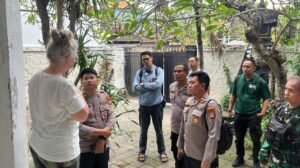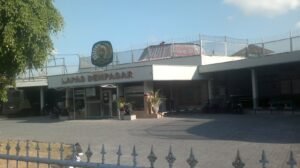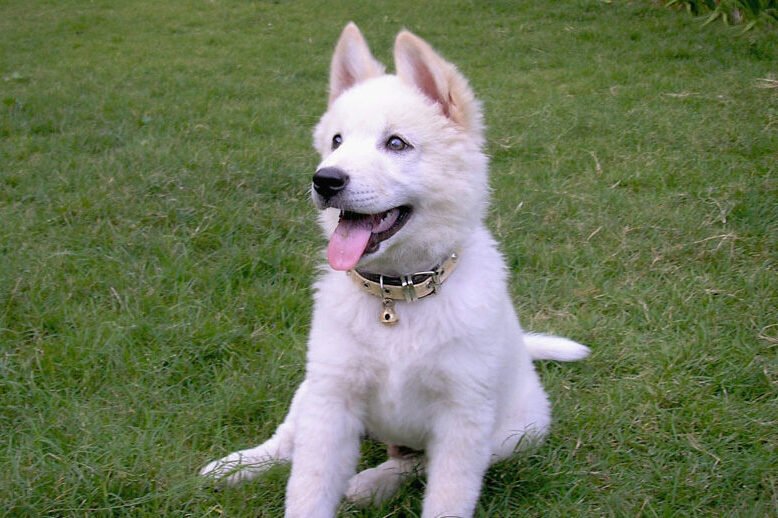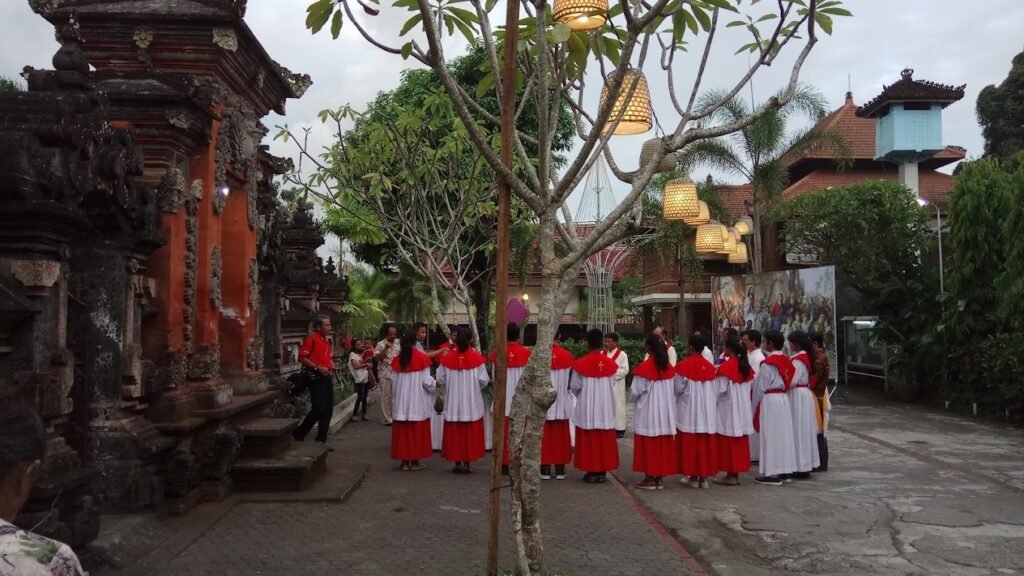
Nestled within the cultural heart of Bali, the village of Tuka stands as an anomaly. While the island is synonymous with Hinduism, Tuka is home to a predominantly Catholic community, a legacy that dates back to the early 20th century.
At the center of this unique blend of faith and tradition is the Holy Trinity Catholic Church, a structure that at first glance resembles a Hindu temple with its red-brick gateway and towering penjor (decorative bamboo poles) flanking the entrance.
Yet, step inside, and the atmosphere shifts.
Instead of Hindu offerings, Christian iconography fills the space—most strikingly, a carved stone relief of the Last Supper, where Jesus, wearing a traditional Balinese udeng (headcloth), dines with his disciples. Above the altar, an inscription in Balinese script reads: “Ene anggan Manira, ene rah Manira” (This is My body, this is My blood).
“We know that the majority in Bali are Hindu, and it is deeply ingrained here. If someone hears the word Bali, they assume Hinduism. But in this small village, the Catholic Church has grown and thrived,” said Father Paskalis Nyoman Widastra, parish priest of the Holy Trinity Church, after an Advent Sunday Mass on 22 December 2024 for Tirto.id.
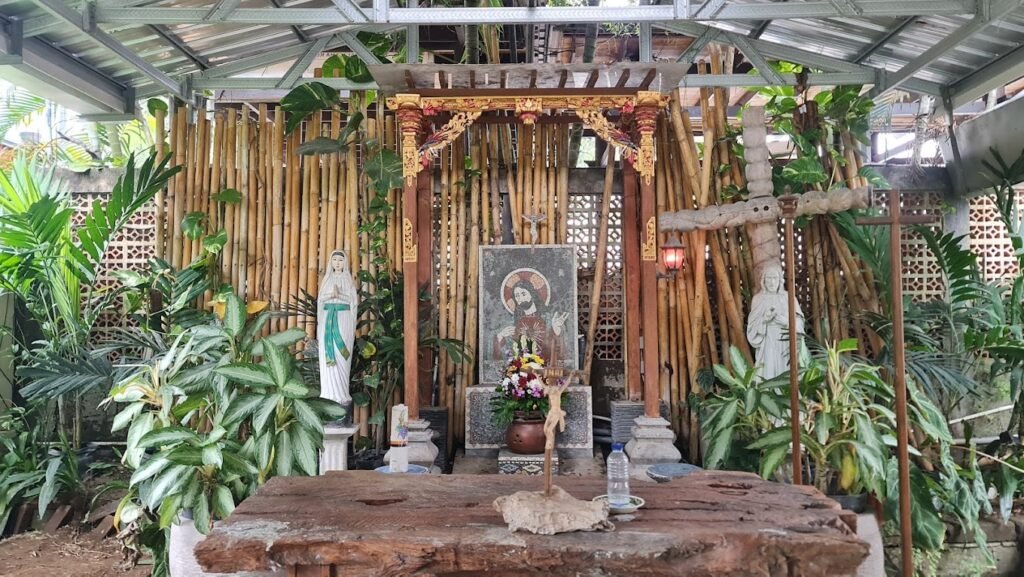
The Roots of Catholicism in Tuka
Catholicism took root in Tuka in the 1930s, with the baptism of two local men, I Wayan Dibloeg and I Made Bronong, after their encounters with Dutch missionary Pastor J. Kertsen. Their conversion sparked interest among fellow villagers, leading to a slow but steady rise in Catholic adherents.
By 1940, local rulers allowed a group of Catholic families to relocate to Palasari in western Bali, inadvertently helping spread the faith beyond Tuka.
Today, four Catholic parishes, collectively known as Catur Bakul, serve the growing Catholic community in North Kuta: Holy Trinity Tuka, Holy Spirit Babakan, Saint Theresia Tangeb, and Saint Paul Kulibul.
“Catur Bakul represents the community of Balinese Catholics, though diversity remains. In Tuka, six church groups make up the community, and as of the last count, there were around 2,635 members—half of whom are ethnically Balinese,” Father Paskalis explained.
Balinese Identity in Catholic Worship
Despite embracing Catholicism, Tuka has not shed its cultural identity. The Holy Trinity Church itself follows the traditional Balinese Tri Mandala spatial concept, dividing its grounds into sacred, intermediary, and public zones—mirroring the layout of Hindu temples. The main crucifix remains hidden behind a door, revealed only during Mass, while the congregation sits in an open, pavilion-like space reminiscent of a wantilan (community hall).
“The church’s architecture is rooted in Balinese philosophy. We follow the Tri Mandala concept, with the altar as the sacred space, the congregation in the middle, and the outer courtyard open to the public,” said Father Paskalis.
Catholic Rituals with Balinese Influence

Tuka’s Catholics also observe rituals that bear striking similarities to Hindu traditions. On Christmas Eve, they erect penjors in front of their homes, just as Hindus do for Galungan and Kuningan. The Christmas offering, gebogan, is assembled much like its Hindu counterpart, except for the addition of a cross-shaped fruit arrangement at the center.
“Like Hindus, we believe in making offerings. Just as Christ sacrificed himself, we balance this with our own offerings of flowers, fruits, and anything else we can present,” Father Paskalis explained.
The village’s Christmas celebrations extend beyond the usual liturgical observances. On Christmas Eve, families gather for Penampahan Natal, a day of animal slaughter for festive meals—much like the Hindu Penampahan Galungan. After Christmas Day, the community marks Umanis Natal on 26 December with a second Mass dedicated to Saint Stephen, the first Christian martyr.
“Most churches don’t hold a second Christmas service, but here, we observe Umanis Natal on 26 December. It is still a Christmas service, but following the liturgy for Saint Stephen’s feast day,” said Nyoman Aloysius, a parish leader.
Strengthening Community Bonds
Tuka’s Catholic men also participate in Pemaksan Katolik, a community group where heads of households contribute monthly fees to fund religious events, including Christmas festivities.
Although their faith differs from the island’s Hindu majority, Tuka’s Catholics see no contradiction in their cultural heritage.
“People often equate Balinese identity with Hinduism, but we view culture as something distinct from religion. Some may question our Balinese identity, but that does not mean we are any less committed to our cultural roots,” Nyoman said.
To ensure cultural continuity, the church actively encourages younger generations to engage in Balinese traditions.
“We teach our children gamelan so they understand the values of Balinese life,” Nyoman added.
A Harmonious Coexistence
As another Christmas approaches, the village is abuzz with preparations.
Choirs rehearse, offerings are arranged, and penjors sway in the wind. For Tuka’s Catholics, faith and tradition are not opposing forces but complementary elements of their identity.
“Through culture, we express our faith. No matter what, a Balinese Catholic is still Balinese,” Father Paskalis concluded.
This story is adapted from a feature by Sandra Gisela for Tirto.id. While details are taken from her piece, it has been rewritten and repurposed for English-language readers who otherwise would not have had access to the original reporting. Read Sandra Gisela’s original story in Bahasa Indonesia here.




